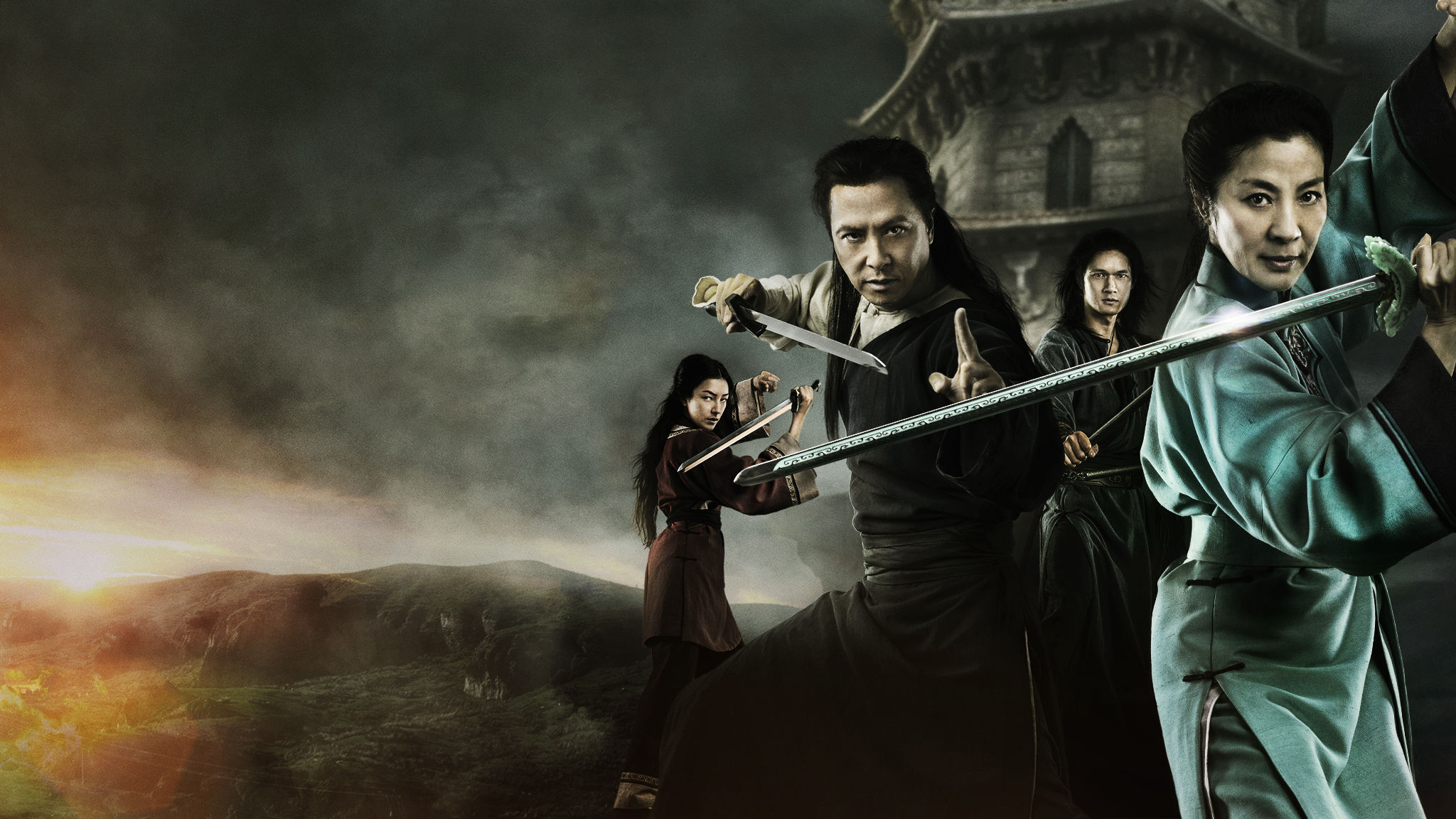
Image from Netflix
By Eric Card
Northwest Asian Weekly
![]()
![]()
![]()
![]()
After more than a decade, the fantastical world of “Crouching Tiger, Hidden Dragon” makes its belated return in “Crouching Tiger, Hidden Dragon: Sword of Destiny.”
This sequel, released Feb. 26, is directed by Yuen Wo Ping, a legendary Chinese martial arts choreographer in the film industry, who also worked as the choreographer in the first film.
Despite his background and involvement in the first “Crouching Tiger,” he still had some big shoes and expectations to fill. Ang Lee’s 2000 film won four Academy Awards, including best foreign language film and best cinematography (it was also nominated for best director and best picture).
This sequel picks up 18 years after the end of the last film, when Yu Shu Lien (Michelle Yeoh), the only returning character from the original film, comes out of solitude to pay respects to the governor in Peking. After an attempted theft of the Green Destiny sword, which belonged to her deceased lover and well-known warrior, Li Mu Bai, she becomes the protector of the sword from warlord Hades Dai (Jason Scott Lee).
Rounding out the cast is Donnie Yen (“Ip Man”) as Silent Wolf, Harry Shum Jr. (“Glee”) as young thief Wie Fang, and newcomer Natasha Liu Bordizzo as Snow Vase. All of these characters are connected, in one way or another, with each other through the past, and they ultimately help each other in defeating Hades Dai and protecting the sword from falling into the wrong hands.
This film, from the get-go, lacks the authenticity of the original film.
The first thing that viewers will notice is that this is an English-language film, and — while also dubbed in Mandarin and Cantonese — is clearly a movie aimed at a Western audience.
While some of the scenery is certainly beautiful, the location looks and feels different from the first film. That’s because a large portion of “Sword of Destiny” was filmed in New Zealand, while most of the first film was filmed in China. And the sequel also suffers from its reliance on CGI effects, both for transitional scenic shots and action fight sequences, possibly due to smaller budget issues.
An interesting aspect of the cast is that it is largely made up of Pan-Asians, comprising Australians, Costa Ricans, Chinese Americans, Hawaiian Chinese, among others.
The diversity of the actors is certainly a good thing and makes for a great looking cast, but in the end, all of these aspects take away from the aura and lore of ancient China.
There are certainly some upsides. The fight scenes are crisp and intense. However, they largely lack the poetic, gravity-defying fighting style employed in “Crouching Tiger.” Whenever fight sequences are utilized, they feel a bit forced and serve more like an homage to the original rather than an integral part of the film series.
The brightest aspect of this sequel is Yeoh in her role reprisal, as she doesn’t seem to have lost a step, both in her acting and fighting skills. More than anyone, she is able to show much without saying anything. The ambience of her character changes very little, from the first film to this one, even though she is speaking an entirely different language.
This film also benefits from having a lighter tone than its predecessor. Perhaps because “Sword of Destiny” doesn’t have Oscar ambitions, it allowed itself to take liberties through some over-the-top action scenes, some of which worked, some that didn’t.
Regardless, most everything can be taken at face value. Many of the characters, even stoic warriors, were able to show off their comedic chops, both in action and interaction with others.
In the end, “Sword of Destiny” ultimately feels like a shrunken version of the original. The budget feels and appears noticeably smaller, the fight sequences shorter, the emotional depth shallower, and, due to several elements, the authenticity falls shorter.
The arrival of “Sword of Destiny” also seems like it came too late. With the onslaught and popularity of wuxia films — concerning adventures of Chinese martial artists in ancient China — with Western audiences in the early 2000s with the likes of “Crouching Tiger,” “Hero,” and “House of Flying Daggers,” the genre has since lost some steam in the West, creating yet another obstacle for this film.
Fair or not, this film would have been received differently if it were its own movie, with its own story, characters, and history. But unfortunately, it’s tied to the original — literally in its title. “Sword of Destiny” is merely a shell of the movie it tries to pay tribute to.
“Crouching Tiger, Hidden Dragon: Sword of Destiny” is available for streaming on Netflix.
Eric Card can be reached at info@nwasianweekly.com.




It’s unfortunate that this sequel didn’t live up to its potential, especially with the original being such a classic. Sacrificing authenticity to try and appeal to Western audiences can have negative drawbacks, and I think it definitely contributed to the sub-par quality of the film. Thanks for sharing this review.
Thanks so much for sharing your comments, John!
Film director is more than just “action and cut”. Martial arts is out dated. Yuen Wo Ping is no Ang Lee when come to drama, emotion and story telling.
Can’t help but agree! Thanks for the comment, Henry!
In the crouching tiger film..dear Natashaji is the best n luking so beautiful in Chinese dress n in male role Donnie yen sir is luking great n perfect..and also rest r good
Natashaji is the best n most beautiful